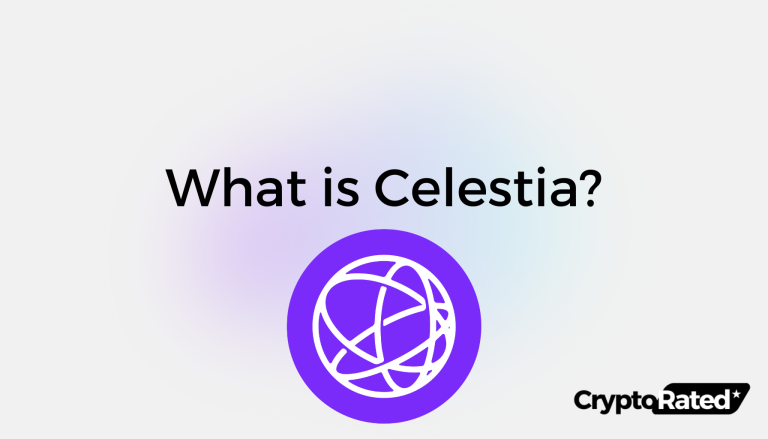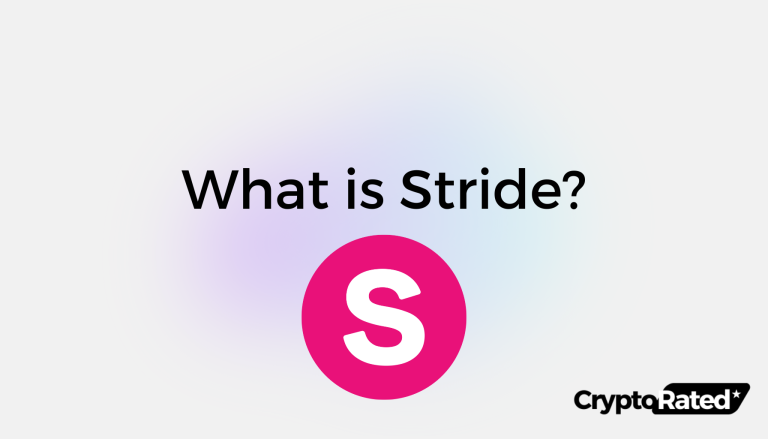
What Is EVM Equivalence?
EVM Equivalence is a technical term that refers to a Layer 2 scaling solution for the Ethereum network. A Layer 2 solution is a blockchain that runs on top of the main Ethereum blockchain, and EVM Equivalence allows these Layer 2 solutions to be compatible with the main Ethereum network. This means that applications that are built on the main Ethereum network can run on Layer 2 solutions without having to be modified. EVM Equivalence is an important step in the development of the Ethereum ecosystem, as it will allow the network to scale and handle more transactions without sacrificing its security or decentralization.
Key Takeaways
- EVM Equivalence is critical for operating Ethereum mainnet applications on Layer 2 networks.
- The concept promises scalability and a unified ecosystem but limits customization.
- Dependence on Ethereum mainnet updates is an inherent challenge of EVM Equivalence.
What is The History of EVM Equivalence?
EVM equivalence is a concept that emerged in the realm of blockchain technology, particularly in the context of layer-2 (L2) scaling solutions for Ethereum. It refers to the ability of a L2 network to execute Ethereum Virtual Machine (EVM)1 bytecode with exact fidelity to the Ethereum mainnet. This means that smart contracts deployed on the L2 network should behave identically to how they would behave on the mainnet, ensuring seamless compatibility and interoperability between the two.
The Rise of EVM Equivalence
The concept of EVM equivalence gained prominence in the early 2020s, driven by the growing demand for scaling solutions to address Ethereum’s scalability limitations. As developers sought to offload computation and transaction processing to L2 networks, they recognized the need for these networks to maintain compatibility with the EVM, the underlying execution environment of Ethereum.
Key Milestones in EVM Equivalence
Several key milestones marked the evolution of EVM equivalence:
- 2021: Optimism, a popular L2 scaling solution, adopted EVM equivalence as its core design principle, aiming to provide a seamless experience for Ethereum developers and users2.
- 2022: StarkWare, another leading L2 scaling solution, introduced its own EVM equivalence implementation, called zkEVM, which utilizes zero-knowledge proofs (ZKPs) to achieve high performance and scalability while maintaining EVM compatibility3.
- 2023: EIP-6269, the Ethereum Improvement Proposal for EVM equivalence, was introduced, providing a formal definition of the concept and outlining guidelines for achieving it4.
Impact of EVM Equivalence
EVM equivalence has played a significant role in the development of L2 scaling solutions and the broader Ethereum ecosystem. It has enabled developers to seamlessly port their existing smart contracts to L2 networks, fostering innovation and growth in the DeFi and Web3 sectors. Moreover, EVM equivalence has reduced the barrier to entry for new users, allowing them to access Ethereum applications without having to directly interact with the mainnet.
As the Ethereum ecosystem continues to expand, EVM equivalence is expected to remain a critical factor in enabling seamless interoperability and facilitating the growth of decentralized applications.
How Do EVM Equivalence Solutions Work?
Layer-2 scaling solutions aim to address the scalability limitations of Ethereum by offloading transaction processing and verification to separate layers5. These solutions provide various trade-offs between scalability, decentralization, and security.
Optimistic Rollups
Optimistic rollups execute transactions off-chain and then submit proofs of execution to the Ethereum mainnet for verification6. This approach offers high throughput and low latency while maintaining compatibility with the Ethereum ecosystem. However, it relies on a trust mechanism in the form of fraud verifiers, which can lead to delays and potential fraud if not properly incentivized.
Zero-Knowledge Rollups
Zero-knowledge rollups utilize zero-knowledge proofs (ZKPs) to provide cryptographically verifiable proofs of transaction execution without revealing the underlying details7. This approach achieves high scalability and security but requires more complex cryptography and computational overhead.
Sidechains
Sidechains operate as separate blockchains with their own consensus mechanisms and states. They are connected to the Ethereum mainnet via bridges, allowing for asset transfers and interaction with Ethereum-based applications. Sidechains offer greater decentralization than rollups but may have lower throughput and latency.
The choice of layer-2 scaling solution depends on the specific needs of the application or user. For applications requiring high throughput and low latency while maintaining compatibility with the Ethereum ecosystem, optimistic rollups are a suitable choice. For applications prioritizing security and decentralization, zero-knowledge rollups offer a strong alternative. Sidechains provide more flexibility but may require careful consideration of trade-offs between decentralization, scalability, and security.
Examples of Layer-2 Scaling Solutions
| Layer 2 (L2) Network | EVM Equivalence | Benefits |
|---|---|---|
| Optimism | Full EVM equivalence | Seamless compatibility with Ethereum mainnet, allowing developers to easily port smart contracts and users to seamlessly interact with applications |
| StarkWare (zkEVM) | Partial EVM equivalence | Achieves high performance and scalability while maintaining EVM compatibility through zero-knowledge proofs (ZKPs) |
| Arbitrum | Strong EVM equivalence | Provides a balance between compatibility and performance, supporting a wide range of applications while offering faster transaction times |
| Polygon PoS | Moderate EVM equivalence | Offers a trade-off between compatibility and decentralization, allowing for faster transaction speeds and lower fees while maintaining some level of EVM compatibility |
Arbitrum: The Success of EVM Equivalence Layer-2s
Arbitrum is an Ethereum Layer-2 scaling solution that provides EVM equivalence, allowing developers to easily port their existing smart contracts to the Arbitrum network without significant modifications. This seamless compatibility has made Arbitrum a popular choice for decentralized applications (DApps) seeking to improve scalability and user experience.
Arbitrum achieves EVM equivalence through its optimistic rollup architecture, which executes transactions off-chain and then submits proofs of execution to the Ethereum mainnet for verification8. This approach offers high throughput and low latency while maintaining compatibility with the Ethereum ecosystem.
Arbitrum has grown into the most successful layer-2 network by some margin, with its total value locked exceeding $2.5 billion, according to DeFi Lama9. It has well over half a dozen dApps with over $100 million locked, including decentralized exchanges and DeFi platforms.

What Are The Advantages of EVM Equivalence?
EVM equivalence is a crucial feature of Layer-2 scaling solutions, enabling seamless interoperability and fostering the growth of the Ethereum ecosystem. It offers several key advantages, including:
| Advantage | Description |
|---|---|
| Seamless Compatibility | DApps and smart contracts can be easily ported between Ethereum mainnet and EVM-equivalent L2 networks, ensuring compatibility and interoperability. |
| Reduced Development Effort | Developers can leverage existing Ethereum development tools and infrastructure to build and deploy smart contracts on EVM-equivalent L2 networks. |
| Simplified User Experience | Users can interact with dapps and smart contracts on EVM-equivalent L2 networks using familiar wallets and interfaces. |
| Faster Transaction Speeds | EVM-equivalent L2 networks typically offer faster transaction speeds and lower fees compared to the Ethereum mainnet. |
| Increased Scalability | By offloading transaction processing to L2 networks, EVM equivalence contributes to the overall scalability of the Ethereum ecosystem. |
What Are The Disadvantages of EVM Equivalence?
EVM equivalence is a crucial feature of Layer-2 scaling solutions, but it also comes with some potential disadvantages, including:
Table of Disadvantages
| Disadvantage | Description |
|---|---|
| Increased Complexity | EVM-equivalent L2 networks introduce additional complexity into the Ethereum ecosystem, which may require developers and users to learn new concepts and terminology. |
| Potential Bottlenecks | As EVM-equivalent L2 networks grow in popularity, there is a risk of bottlenecks forming, leading to congestion and reduced throughput. |
| Security Trade-offs | While EVM-equivalent L2 networks inherit the security of the Ethereum mainnet, they may introduce new security risks associated with their specific architectures. |
| Interoperability Challenges | While EVM equivalence facilitates interoperability between L2 networks and the Ethereum mainnet, there may be challenges in achieving seamless interoperability between different L2 networks. |
Final Thoughts on EVM Equivalence
EVM equivalence stands as a cornerstone of Ethereum’s scaling strategy, enabling seamless interoperability between the Ethereum mainnet and L2 networks. It has played a pivotal role in attracting new users and developers to the Ethereum space, fostering innovation and growth in the DeFi and Web3 sectors. While EVM equivalence comes with potential trade-offs, its ability to maintain compatibility and interoperability while enhancing scalability and user experience makes it a valuable tool for the future of Ethereum. As developers continue to refine L2 scaling solutions, the role of EVM equivalence is expected to grow, paving the way for a more robust and scalable decentralized ecosystem.
Frequently Asked Questions
What is EVM Equivalence?
EVM equivalence is a crucial feature of Layer-2 scaling solutions for Ethereum. It ensures that applications built on L2 networks can seamlessly interact with the Ethereum mainnet and vice versa. This is possible because L2 networks with EVM equivalence execute the same Ethereum Virtual Machine (EVM) bytecode as the Ethereum mainnet. This compatibility allows developers to easily port their existing smart contracts to L2 networks without significant modifications.
How Does EVM Equivalence Work?
EVM equivalence is achieved through various techniques. One common approach is to use an optimistic rollup architecture, where transactions are executed off-chain on the L2 network and then periodically submitted to the Ethereum mainnet for verification. If no fraud is detected, the transactions are final and included in the mainnet’s state. Another approach is to utilize zero-knowledge proofs (ZKPs), which provide cryptographically verifiable proofs of transaction execution.
WRITTEN
Peter Barker
Peter is an experienced crypto content writer and a DeFi enthusiast with more than 3+ years of experience in the space. Previously a journalist and news editor at a leading European news sourcing agency.




